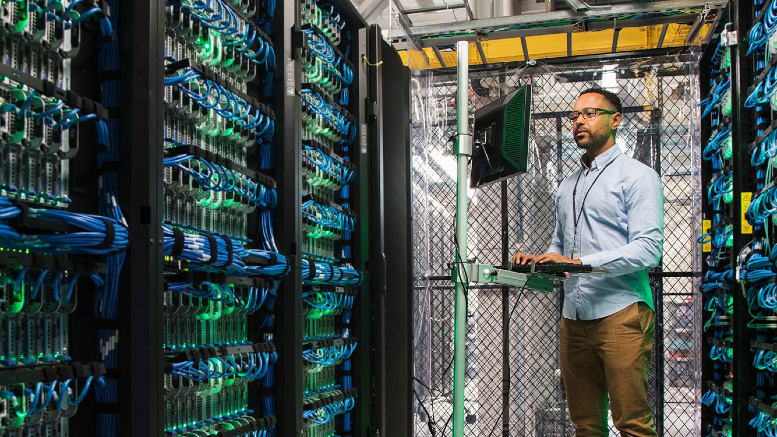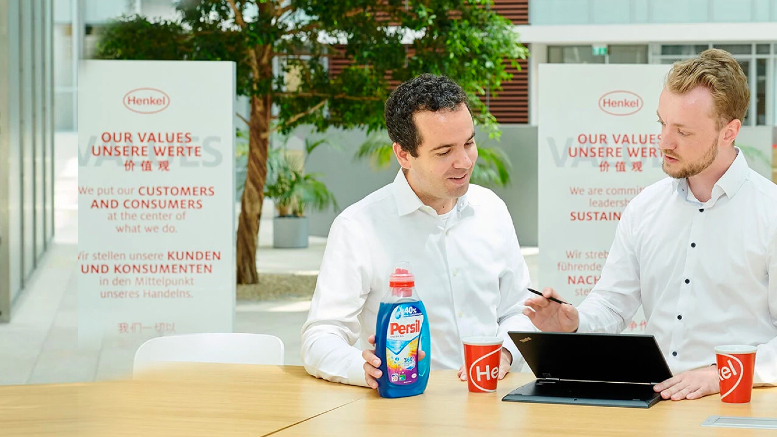Building a sustainable workplace your employees actually enjoy
May 8, 2025 / Rich Owen
Short on time? Read the key takeaways:
- Smart, connected workplaces boost both business performance and employee well-being when designed with people at the center
- Workplace quality directly influences an organization's ability to attract and retain top talent in competitive markets
- Technology integration creates seamless experiences that eliminate friction between physical and virtual work environments
- Organizations that view workplace transformation as continuous evolution rather than a one-time project gain lasting competitive advantages
The workplace conversation has shifted. Companies ask how to bring people back to offices while employees question why they should return.
The answer lies in creating spaces that serve a purpose beyond what remote work offers – environments that blend technology, sustainability, and human connection.
When companies build workplaces with people at the center, something remarkable happens. Collaboration flourishes, creativity ignites, and teams develop stronger bonds. These spaces become magnets rather than mandates, drawing people in because they enhance both work and well-being.
Smart, connected workplaces create environments where employees genuinely want to work, and they adapt to changing needs while supporting organizational goals. Explore what makes these workplaces successful and how your organization can build spaces that people choose rather than spaces they tolerate.
The anatomy of a truly connected workplace
Smart building infrastructure
Smart buildings start with integrated infrastructure. The building management system functions as the central brain, controlling everything from HVAC to lighting and security systems.
Environmental sensors monitor air quality, occupancy patterns, and other factors that affect comfort and productivity. Environmental factors like ventilation directly affect employee comfort and focus. Smart systems can detect these conditions and adjust accordingly.
Employee-focused applications
Digital tools that center on employee needs create a smooth workplace experience. These include:
Digital wayfinding solutions: Interactive maps and navigation tools help employees find their way around office spaces efficiently. Through mobile apps and interactive kiosks, staff can locate available meeting spaces, find colleagues, and navigate complex office layouts. This eliminates the frustration of searching for appropriate workspaces.
Desk and room booking platforms: These platforms enable employees to reserve the resources they need before coming to the office. Staff can view workplace schedules, check colleague locations, and reserve specific desks or rooms based on their requirements. For workspace administrators, these systems provide valuable usage data to optimize space allocation and resource management.
Smart meeting spaces
A managed meeting room solution integrated with smart building infrastructure makes meetings more productive and workplaces more efficient.
Technology for seamless collaboration: High-quality video conferencing and collaboration tools create an inclusive environment for both in-person and remote participants. These technologies bridge the gap between physical and virtual attendees, creating more equitable meeting experiences.
Proactive technology management: Continuous monitoring ensures that meeting room technologies function optimally at all times. Quick issue resolution minimizes downtime, allowing employees to focus on their work rather than troubleshooting technical problems.
Overcoming workplace challenges
Workplace challenges affect how teams perform and how people feel about their jobs. Finding the right balance between technology implementation and human needs requires careful planning. Organizations that effectively solve these problems gain advantages in both talent acquisition and operational performance. Four critical challenges require attention:
Managing attention in digitally saturated environments: With information flooding in from various devices and formats, maintaining employee focus has become increasingly difficult. Companies need to design work environments that enable connection and collaboration while minimizing distractions.
Developing effective hybrid work strategies: The shift toward hybrid models presents challenges in meeting employee expectations while fostering a cohesive work culture. Ask employees where they want to work, and more than likely, the answer will be hybrid. Hybrid work, often settling around three days in-office, will likely become the norm as companies strive to balance remote flexibility with in-the-office engagement, fostering retention and adapting to new workplace expectations.
Breaking down communication silos: Teams that communicate well across departments grow faster. Effective collaboration is crucial for innovation and business success.
Creating equity between in-office and remote experiences: Ensuring that remote workers have access to the same quality of experience as in-office staff is essential for maintaining team cohesion and preventing a two-tier workforce.
Why workplace transformation pays off
Connected workplaces boost both business results and employee happiness. When companies combine smart technologies with thoughtful design, they create spaces that work more efficiently and better support modern work habits. Smart workplace investments deliver clear returns:
Enhanced employee experience: When employees have control over their work environment and access to intuitive digital tools, satisfaction increases. Employees perform better when they can choose their work environment.
Improved productivity: Seamless connectivity across physical and virtual boundaries removes the resistance that disconnected systems create. This integration enables teams to communicate effectively in any location – managed meeting rooms, individual workstations, and home offices all connect seamlessly.
Increased cost savings: Smart building systems optimize space utilization and resource management. By tracking how spaces are used, organizations can make data-driven decisions about workspace allocation and reduce unnecessary real estate costs.
Stronger talent acquisition: Workplace quality now significantly impacts recruitment in the tight job market. Just as professional athletes are attracted to high-quality training facilities rather than just stadiums, employees value workplaces that support their productivity and well-being daily.
How to know your workplace strategy is working
Measuring workplace success requires looking at multiple factors and a comprehensive approach to data collection and analysis. While organizations typically use productivity as their primary metric for digital transformation ROI, multiple indicators provide a more complete picture of success.
Employee satisfaction: The employee net promoter score indicates how likely staff members would recommend their organization. Companies should track:
- Employee turnover and retention rates
- Absenteeism patterns
- Engagement survey participation
- Digital Experience Index scores
Space utilization: Understanding how and when spaces are used helps organizations optimize their real estate investments.
Technology adoption: Tracking how employees engage with workplace technologies provides insights into what's working and what needs improvement.
Return on investment: Measuring both tangible benefits (like reduced real estate costs) and intangible benefits (like improved collaboration) provides a complete picture of investment returns.
Creating responsive workplaces for changing needs
Developing a sustainable, connected workplace never stops. Companies that embrace this ongoing evolution position themselves to attract top talent, reduce operational costs, and build more resilient teams.
Organizations achieve the best results by prioritizing employee needs and balancing technology with human-centered design principles. When workplace systems work together to support flexible arrangements, employees respond with higher engagement and performance.
Work patterns change constantly, and physical environments must adapt accordingly. Quick adaptation to changing work patterns creates more engaged teams and stronger market positions.
Ready to create a workplace your employees will love coming to? Learn more about Unisys sustainable workplace solutions online or contact our experts.



















